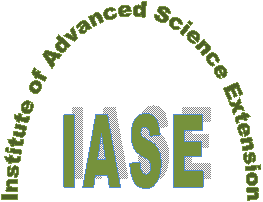International
ADVANCED AND APPLIED SCIENCES
EISSN: 2313-3724, Print ISSN: 2313-626X
Frequency: 12
![]()
Volume 12, Issue 8 (August 2025), Pages: 237-245
----------------------------------------------
Original Research Paper
Unlocking business insights with big data analytics and predictive AI: Discovering hidden patterns for accurate sales forecasting
Author(s):
Affiliation(s):
1College of Arts and Science, Applied Science University, P.O. Box 5055, Manama, Bahrain
2VPAA and Computer Science Department, Applied Science University, P.O. Box 5055, Manama, Bahrain
3School of Computer Science, National College of Business Administration and Economics, Lahore 54000, Pakistan
4University College, Korea University, Seoul 02841, South Korea
Full text
* Corresponding Author.
 Corresponding author's ORCID profile: https://orcid.org/0000-0002-5240-0984
Corresponding author's ORCID profile: https://orcid.org/0000-0002-5240-0984
Digital Object Identifier (DOI)
https://doi.org/10.21833/ijaas.2025.08.022
Abstract
In today’s digital era, businesses are increasingly adopting innovative approaches to gather valuable data for informed decision-making and maintaining competitiveness. This study examines the application of big data analytics and predictive artificial intelligence (AI) in sales forecasting, a task that remains challenging but essential for effective demand planning and resource allocation. Traditional forecasting methods often fall short in dynamic market environments, whereas advanced techniques offer greater accuracy. Using real-world data, this research employs machine learning algorithms to uncover hidden patterns and generate reliable sales predictions. A predictive model based on the XGBoost algorithm was developed and achieved a high R² score of 0.94, with cross-validation yielding a consistent mean score of 0.94 (SD = 0.02), indicating strong predictive power and stability. The findings demonstrate the effectiveness of big data and predictive AI in improving forecast accuracy and supporting data-driven business decisions. This study highlights the practical value of integrating advanced analytics into sales forecasting processes for enhanced strategic planning.
© 2025 The Authors. Published by IASE.
This is an
Keywords
Sales forecasting, Big data, Predictive AI, Machine learning, Business analytics
Article history
Received 17 November 2024, Received in revised form 19 April 2025, Accepted 1 August 2025
Acknowledgment
No Acknowledgment.
Compliance with ethical standards
Conflict of interest: The author(s) declared no potential conflicts of interest with respect to the research, authorship, and/or publication of this article.
Citation:
Ghazal TM, El Kadhi N, and Ahmad M (2025). Unlocking business insights with big data analytics and predictive AI: Discovering hidden patterns for accurate sales forecasting. International Journal of Advanced and Applied Sciences, 12(8): 237-245
Figures
Fig. 1 Fig. 2 Fig. 3 Fig. 4 Fig. 5 Fig. 6 Fig. 7
Tables
No Table
----------------------------------------------
References (16)
- Ahaggach H, Abrouk L, and Lebon E (2024). Systematic mapping study of sales forecasting: Methods, trends, and future directions. Forecasting, 6(3): 502-532. https://doi.org/10.3390/forecast6030028 [Google Scholar]
- Ayub N, Irfan M, Awais M, Ali U, Ali T, Hamdi M, Alghamdi A, and Muhammad F (2020). Big data analytics for short and medium-term electricity load forecasting using an AI techniques ensembler. Energies, 13(19): 5193. https://doi.org/10.3390/en13195193 [Google Scholar]
- Cadavid JPU, Lamouri S, and Grabot B (2018). Trends in machine learning applied to demand and sales forecasting: A review. In the 7th International Conference on Information Systems, Logistics and Supply Chain, Lyon, France. [Google Scholar]
- Caglayan N, Satoglu SI, and Kapukaya EN (2020). Sales forecasting by artificial neural networks for the apparel retail chain stores. In the Intelligent and Fuzzy Techniques in Big Data Analytics and Decision Making: Proceedings of the INFUS 2019 Conference, Springer International Publishing, Istanbul, Turkey: 451-456. https://doi.org/10.1007/978-3-030-23756-1_56 [Google Scholar]
- Faheem M, Aslam M, and Kakolu S (2024). Enhancing financial forecasting accuracy through AI-driven predictive analytics models. IRE Journals, 4(12): 322-328. [Google Scholar]
- Fathima F, Inparaj R, Thuvarakan D, Wickramarachchi R, and Fernando I (2024). Impact of AI-based predictive analytics on demand forecasting in ERP systems: A systematic literature review. In the International Research Conference on Smart Computing and Systems Engineering, IEEE, Colombo, Sri Lanka, 7: 1-6. https://doi.org/10.1109/SCSE61872.2024.10550480 [Google Scholar]
- Gupta S, Chen H, Hazen BT, Kaur S, and Gonzalez ED (2019). Circular economy and big data analytics: A stakeholder perspective. Technological Forecasting and Social Change, 144: 466-474. https://doi.org/10.1016/j.techfore.2018.06.030 [Google Scholar]
- Iyengar NCS, Vivekanandan T, and Ahmed ST (2023). Big data analytic approach to predict risk assessment for cardiovascular diseases using Framingham risk score. International Journal of Computational Learning and Intelligence, 2(1): 32-38. [Google Scholar]
- Kaggle (2024). Pakistan’s largest Pakwheels automobiles listings. Available online at: https://www.kaggle.com/datasets/asimzahid/pakistans-largest-pakwheels-automobiles-listings
- Okeleke PA, Ajiga D, Folorunsho SO, and Ezeigweneme C (2024). Predictive analytics for market trends using AI: A study in consumer behavior. International Journal of Engineering Research Updates, 7(1): 36-49. https://doi.org/10.53430/ijeru.2024.7.1.0032 [Google Scholar]
- Pavlyshenko BM (2019). Machine-learning models for sales time series forecasting. Data, 4(1): 15. https://doi.org/10.3390/data4010015 [Google Scholar]
- Punia S and Shankar S (2022). Predictive analytics for demand forecasting: A deep learning-based decision support system. Knowledge-Based Systems, 258: 109956. https://doi.org/10.1016/j.knosys.2022.109956 [Google Scholar]
- Rashidi SF, Olfati M, Mirjalili S, Platoš J, and Snášel V (2025). A comprehensive DEA-based framework for evaluating sustainability and efficiency of vehicle types: Integrating undesirable inputs and social-environmental indicators. Cleaner Engineering and Technology, 27: 100989. https://doi.org/10.1016/j.clet.2025.100989 [Google Scholar]
- Seyedan M and Mafakheri F (2020). Predictive big data analytics for supply chain demand forecasting: Methods, applications, and research opportunities. Journal of Big Data, 7(1): 53. https://doi.org/10.1186/s40537-020-00329-2 [Google Scholar]
- Smith MA and Côté MJ (2022). Predictive analytics improves sales forecasts for a pop-up retailer. INFORMS Journal on Applied Analytics, 52(4): 379-389. https://doi.org/10.1287/inte.2022.1119 [Google Scholar]
- Yun C, Shun M, Junta U, and Browndi I (2022). Predictive analytics: A survey, trends, applications, opportunities’ and challenges for smart city planning. International Journal of Computer Science and Information Technology, 23(56): 226-231. [Google Scholar]

